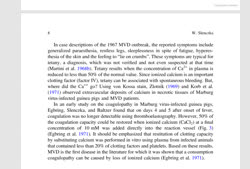Pigs do make their own ascorbate, except if they get sick and then the enzyme that makes ascorbate goes low and they're unable to. This is why farmers supplement pigs feed with C in times of disease to cut the rate of death in half or more. Ascorbate outperformed all other modalities of death prevention from flu in these tests.
One might argue "these are pigs not humans" but a) we transplant pig heart valves into humans because they're that similar. and b) swine flu affects both and in the same way. So far they're the only animal that makes its own ascorbate that has been found infected with a species of Ebola virus. This would require it to be found with some other pathogen that might drive down levels of porcine ascorbate and this is in fact the case. When Ebola was found in pigs in the Philippines, two other respiratory viruses were found at the same time.
In this sense the pneumonia-Ebola species complex (from a phenotypic and not taxonomically point of view) acts as a team, Ebola, for all practical purposes can't infect a pig unless some other similar virus or pathogen or malnutrition acts first.
See:
"Have Your Pigs Had Their Vitamin C Today?" in National Hog Farmer Magazine for all the data.



